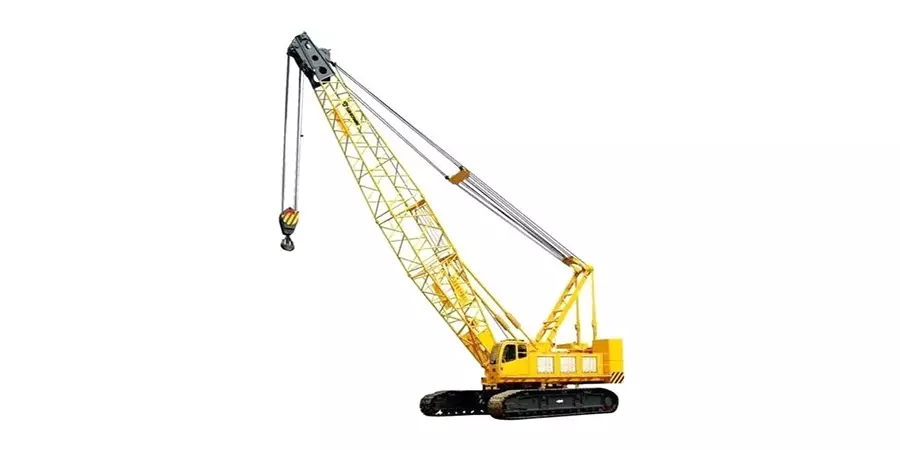Markets

Hydraulic Products Used in Crawler Cranes: A Technical Overview
Crawler cranes rely heavily on hydraulic systems to perform heavy lifting, precise positioning, and stable operation. These systems integrate a range of hydraulic components that work together to deliver power, control, and reliability. Below is a detailed breakdown of the key hydraulic products used in crawler cranes:
1. Hydraulic Pumps
Function: Convert mechanical energy from the engine into hydraulic energy by pressurizing fluid.
Types:
Axial Piston Pumps: Common in high-power applications for their efficiency and variable displacement capabilities.
Gear Pumps: Used for auxiliary systems requiring lower pressure.
Role in Cranes: Power the main hydraulic circuits for boom movement, winches, and track drives.
2. Hydraulic Motors
Function: Convert hydraulic energy back into mechanical energy to drive motion.
Types:
Radial Piston Motors: Provide high torque for track propulsion and slewing (rotation).
Gerotor/Geroler Motors: Used in compact systems like swing drives.
Applications: Drive the crawler tracks, slewing ring, and winches.
3. Hydraulic Cylinders
Function: Generate linear motion to extend, retract, or adjust crane components.
Key Uses:
Boom Telescoping: Multi-stage cylinders extend and retract the boom sections.
Jib Adjustment: Control the angle and extension of the jib.
Counterweight Deployment: Manage counterbalance systems for stability.
Design: High-strength steel construction with chromed rods for corrosion resistance.
4. Control Valves
Function: Regulate fluid flow direction, pressure, and volume to control actuator speed and force.
Types:
Directional Control Valves: Manage boom, jib, and track movements.
Pressure Relief Valves: Protect the system from overpressure.
Proportional Valves: Enable precise control via electronic signals (e.g., joystick inputs).
Advanced Systems: Load-sensing valves optimize energy use by adjusting pump output to match demand.
5. Hydraulic Filters
Function: Maintain fluid cleanliness by removing contaminants (particles, water, air).
Types:
Suction Filters: Protect pumps from debris.
Return Line Filters: Clean fluid before it re-enters the reservoir.
High-Pressure Filters: Installed in critical circuits (e.g., servo valves).
Importance: Contamination control is critical for preventing wear in precision components.
6. Hydraulic Reservoir (Tank)
Function: Store hydraulic fluid, dissipate heat, and allow air/contaminants to settle.
Design Features:
Baffle plates to reduce fluid turbulence.
Air breathers with desiccant to prevent moisture ingress.
Magnetic plugs to capture metal particles.
7. Accumulators
Function: Store pressurized fluid to supplement pump flow, absorb shocks, and maintain pressure during pump downtime.
Applications:
Emergency braking for slewing systems.
Smoothing out pressure spikes in boom operations.
8. Cooling Systems
Function: Dissipate heat generated by hydraulic systems to maintain optimal fluid temperature.
Components:
Oil Coolers: Air- or water-cooled radiators.
Heat Exchangers: Integrated with engine cooling systems.
9. Hoses, Pipes, and Fittings
Function: Transport hydraulic fluid between components.
Materials:
Reinforced Hoses: Flexible for moving parts (e.g., boom joints).
Steel Tubing: Used in high-pressure, fixed lines.
Standards: Must meet SAE, DIN, or ISO specifications for pressure ratings and durability.
10. Sensors and Electronic Controls
Function: Monitor and optimize hydraulic system performance.
Key Sensors:
Pressure Transducers: Track circuit pressures.
Temperature Sensors: Prevent overheating.
Position Sensors: Provide feedback for automated boom/jib control.
Integration: Modern cranes use CAN bus systems to link hydraulic controls with operator interfaces and safety systems.
11. Hydraulic Fluids
Function: Transmit power, lubricate components, and prevent corrosion.
Types:
Mineral Oils: Standard for most applications.
Synthetic Fluids: Used in extreme temperatures or environmentally sensitive areas.
Specifications: Must meet ISO VG 46 or manufacturer-specific standards (e.g., Rexroth HLP 68).
12. Specialized Systems in Crawler Cranes
Load-Sensing Hydraulics: Adjusts pump output to match load requirements, improving fuel efficiency.
Closed-Loop Circuits: Used in track drives for precise speed control and regenerative braking.
Fail-Safe Valves: Ensure safe shutdown in case of hydraulic failure (e.g., boom lock valves).
Key Manufacturers of Hydraulic Components
Bosch Rexroth: Pumps, valves, and control systems.
Parker Hannifin: Cylinders, filters, and manifolds.
Eaton (Vickers): Motors and proportional valves.
Danfoss: Advanced electro-hydraulic controls.
Kawasaki Precision Machinery: High-pressure axial piston pumps.
Maintenance Best Practices
Regular Fluid Analysis: Check for viscosity, contamination, and oxidation.
Filter Replacement: Follow OEM intervals to prevent component wear.
Leak Inspections: Address seal or hose failures promptly.
System Flushing: Perform after major repairs to remove debris.
Conclusion
The hydraulic system in a crawler crane is a complex network of pumps, motors, valves, and actuators designed to deliver power, precision, and reliability. Understanding these components and their interactions is essential for optimizing performance, ensuring safety, and minimizing downtime. As crawler cranes evolve, advancements in electro-hydraulic integration and smart diagnostics continue to enhance their capabilities in demanding industrial and construction environments.
